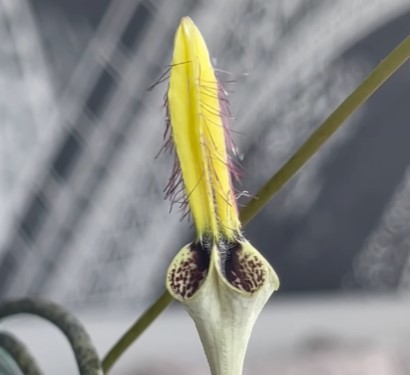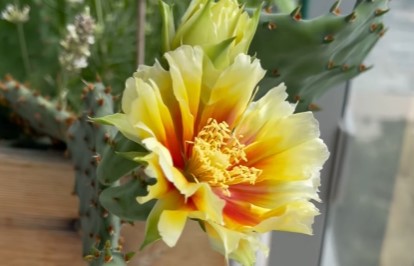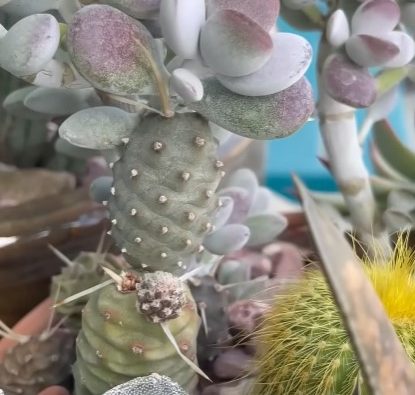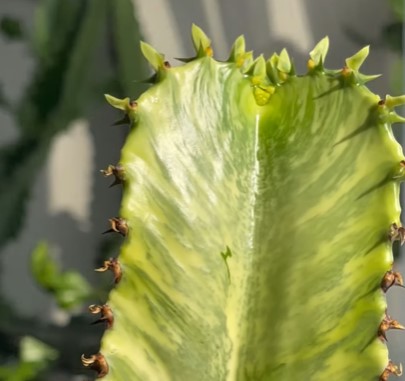My Hoya Obsession: A Journey of Growth, Bloom, and Discovery
It all started four years ago with a single spark, an obsession that slowly grew into a full-blown passion for Hoyas. Among the many plants that have found their way into my home and heart, none has stood out quite like Hoya obscura. This particular plant has bloomed more than any other in my care, and its journey mirrors my own growth as a plant parent.
I first received Hoya obscura as a set of cuttings. They rooted with such ease that I knew immediately this was a plant meant for me. Unlike some of the fussier Hoyas, obscura seemed to thrive on simplicity. In fact, it’s been three years, and the plant still lives in the same plastic container I used for propagation. That alone says a lot, some Hoyas truly do love being root bound, and obscura might be the poster child for that preference.
Throughout the seasons, this Hoya has offered not only blooms but a beautiful visual transformation. I keep it in full sun during the summer, and the leaves turn a vibrant red under the intense light. Come winter, in the reduced sunlight of the northern hemisphere, the leaves shift back to green. It’s a cycle I’ve come to look forward to. Almost like watching the plant breathe through the seasons.
Though Hoya obscura can bloom in winter, most of its flowers arrive during the brighter months, especially spring and summer. It’s a joy to see the clusters of blooms appear again and again, making all the care worth it.
When it comes to watering, I treat this plant much like an orchid. I wait until it’s bone dry, then flood it generously and allow it to slowly dry out again. The plant loves this method, especially in my southwest-facing spot where it gets plenty of warmth and light. For feeding, I use a light dose of fertilizer with every watering, currently Crystal Star Fertilizer with plain tap water. It’s a routine that works, and this Hoya proves it with its consistent performance.
My Hoya adventure really began when I placed my first order from www.ahhoya.com. That shipment marked the beginning of a growing collection. I still remember the excitement of opening that package. It included:
New Guinea Ghost
Pachyclada var. New Moon
Macrophylla Snow Queen (Splash)
Pachyclada Red Corona
Pachyclada White
cv Jennifer
Fungi
Glabra Thai
Imperialis Palawan
Myrmecopa Purple
Macrophylla (Big Leaf)
There’s even a video of that unboxing still available on YouTube—proof of how enthusiastic I was (and still am).
Over time, I’ve come to understand that not every Hoya is meant for me. Some are just too finicky, requiring specific humidity levels, temperatures, or light conditions that don’t match my space. That’s why I’ve started refining my collection, choosing Hoyas that not only speak to me but can thrive in the warm, bright environment I can offer. It’s been a journey of trial, error, and lots of learning.
I suppose you could say I have a love-hate relationship with Hoyas. They challenge me, but they also reward me. And at the center of it all is my beloved Hoya obscura, quietly thriving in its plastic pot, reminding me that sometimes, the simplest plants bring the greatest joy.
Hoya import from Ah Hoya ( Hoya haul)
• Hoya import from Ah Hoya ( Hoya haul)
My Hoya Obscura Care Guide
Light Requirements:
Hoya obscura thrives in bright, indirect sunlight, but can tolerate full sun. For the best foliage color, expose it to direct morning or late afternoon sun—this will encourage beautiful red sun-stressed leaves during summer. In winter, leaves typically revert to green due to lower light levels.
Watering Needs:
Water only when the soil is completely dry. Use the “soak and dry” method: flood the pot with water, then allow the soil to dry out fully before watering again. Avoid overwatering, as this Hoya is sensitive to root rot.
Soil Type:
Use a well-draining, airy mix—orchid bark, perlite, and coco coir or peat-based potting mix works well. Hoya obscura prefers to stay slightly root bound, and it can thrive long-term in smaller containers.
Temperature & Humidity:
Ideal temperatures are 65°F–85°F (18°C–29°C). It does well in normal household humidity but benefits from moderate humidity (40–60%), especially during the growing season.
Fertilizer:
Feed lightly with every watering during the growing season. Use a balanced, water-soluble fertilizer or an orchid fertilizer. Crystal Star Fertilizer is a great option and works well with regular tap water.
Propagation:
Hoya obscura is very easy to propagate from cuttings. Root in water, moss, or directly in soil. It’s one of the least fussy Hoyas for propagation.
Blooming:
Blooms primarily during spring and summer, but can also flower in winter with adequate light. Flowers are small, fragrant, and appear in clusters.



